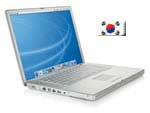South Korea
Population: The Population of the Republic of Korea topped 45.9million in 1997. In July 2004, South Korea’s population was estimated to be 48,598,175. The official growth rate estimate is 0.6 percent, and this rate is expected to decline to zero by 2028. In the twentieth century, there has been significant emigration to China (1.9 million) and the United States (1.5 million), and about 1 million Koreans live in Japan and the countries of the former Soviet Union. More than 80 percent of all South Koreans live in urban areas. Population density is very high, with approximately 480 persons per square kilometer.
Seoul the capital city, has more than 11 million inhabitants. The Koreans are on ethnic family speaking one language. They share ceretain distinct physical characteristics which differentiate them from other Asian peoples including the Chinese and the Japanese, and they have a strong cultural identity as one ethnic family. the modern Korean people are believed to be the descendants of several Mongol tribes which migrated onto the Koran Peninsula from Central Asia particularly during the Neolithic Age (c. 5000-1000 B.C.) and the Bronze Age (c. 1000-300 B.C.). By the beginning of the Christian era, the Korean were a homogeneous people, although the country was not politically unified until the seventh century A.D.ea is located in north east side of Asia.
North Korea
Population: North Korea’s population was estimated in July 2004 at 22,697,553. The annual population growth rate is 0.9 percent. United Nations (UN) estimates for 2002 indicate that North Korea’s population density stood at 183.6 persons per square kilometer; 40 percent of the population lived in rural and 60 percent in urban areas.
Demography: According to estimates of North Korea’s age structure, 24.6 percent of inhabitants are between zero and 14 years of age, 67.8 percent are between 15 and 64 years of age, and 7.6 percent are 65 and older. Estimates made in 2004 indicate a birthrate of nearly 16.8 births per 1,000 population and a death rate of just over 6.9 deaths per 1,000. In 2004 life expectancy was estimated at 73.9 years for women and 68.4 for men, or nearly 71.1 years total. Other projections are much lower for both women and men. Life expectancy is not expected to improve as the first decade of the twenty-first century proceeds. The infant mortality rate was estimated at 24.8 per 1,000 live births in 2004. The total fertility rate for 2004 has been estimated at 2.2 children per woman. There is no legal migration from North Korea, and after the Korean War (1950–53) only 5,000 North Koreans successfully reached South Korea until the turn of the century. However, in 2003 and 2004 unprecedented numbers of North Koreans—estimates range between 140,000 and 300,000—fled to China with hopes of reaching South Korea. According to the U.S. Department of State, only 1,894 reached South Korea during 2004.
Ethnic Groups: The vast majority of the racially homogeneous population are ethnic Koreans. North Korea also has a few Chinese- and Japanese-speaking communities.


